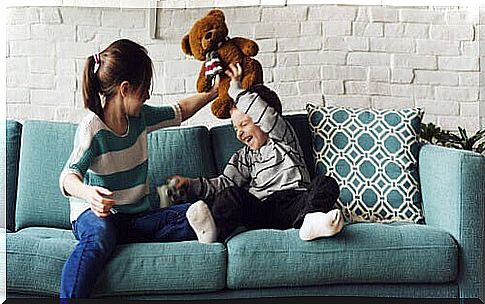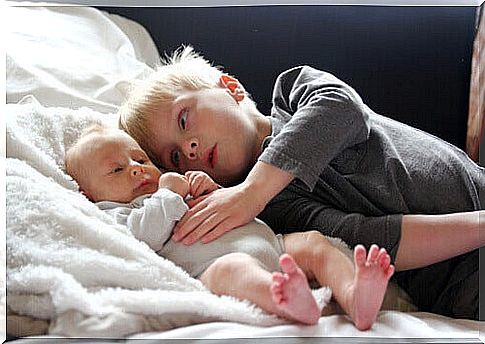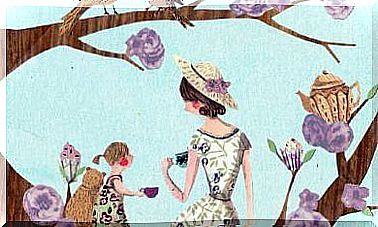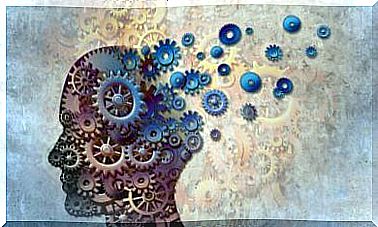Big Brothers / Big Sisters: Between Laughter And An Example To Follow

Changes in family dynamics are important. Schedules, meals, leisure. And what about the change in the parents’ center of interest, the distribution of tasks and responsibilities. Big brothers / big sisters know what I’m talking about. It is important to deal with all of this from the perspective of an eight or ten year old.
In this age range of eight to ten, children become aware of their ability to feel two emotions at the same time. Being angry because someone comes in to take their place and be happy because that very fact brings a lot of positive elements. Emotional ambivalence must be respected by adults. The key would be to explain these conflicting feelings and to feel that the parents are showing understanding.
Between laughter and example
Raising another family member seems to be a challenge for parents. However, another challenge is to readjust the expectations and responsibilities of the eldest in the family. This is a difficult balance which, if not struck, pushes the big brother / sister away and makes life much more complicated. The feeling of no longer being an only child can lead them to take two different paths (that of indifference or that of hyper-responsibility), both of which are equally harmful.
“What strange creatures brothers are!”
-Jane Austen-

So, for example, the big brother / big sister can get too involved in the education of the little brothers / sisters and also play the role of father or mother when they are absent. He can even compete with them in their presence. This can be a great pressure and become a way of limiting the right of older brothers / sisters to make mistakes. Big brothers / big sisters must adjust to this role and perform tasks that correspond to their age. Parents must therefore succeed in being fair. The ideal is to place their eldest in a position where they can exercise their role, and not another.
The union of brothers / sisters is strength
“And the older one, how does he / she handle that?” Is a question that comes up often. There is irritation, jealousy, envy, whims, anger … Routines and habits, so sought after to give a structure and influence the emotional and academic development of children, change suddenly and must be rebuilt. But that’s not all: we must also take into account the new parts that are added.
“As we got older my brothers acted like they didn’t care, but I always knew they cared about me and were there.”
-Catherine Pulsifer-

This whole part of formal responsibility also hides positive emotions (fun, satisfaction and euphoria). There is nothing better than this complicity and this connection which speaks volumes. Sharing secrets, releasing tensions or finding a way to disconnect from the rest are part of everything that comes with having a little brother / sister.
Sowing the seeds of trust and tenderness is important. It is from there that will emerge the fraternal feeling, one which transcends genetics. It is possible that the relationship will transform over the years. The age differences place the two siblings at completely different stages of development. The main thing is that the asymmetry produced by the age difference gradually fades, offering the possibility of being friends in addition to being brothers or sisters. Both siblings need to know that they are there for each other, that they can trust each other.
“In the outside world, we are growing. But between brothers and sisters, it is not the same. We stay the same. We know our hearts. We share our private family jokes. We remember our secrets, our sorrows, our joys. We live outside of time. ”
-Clara Ortega-









